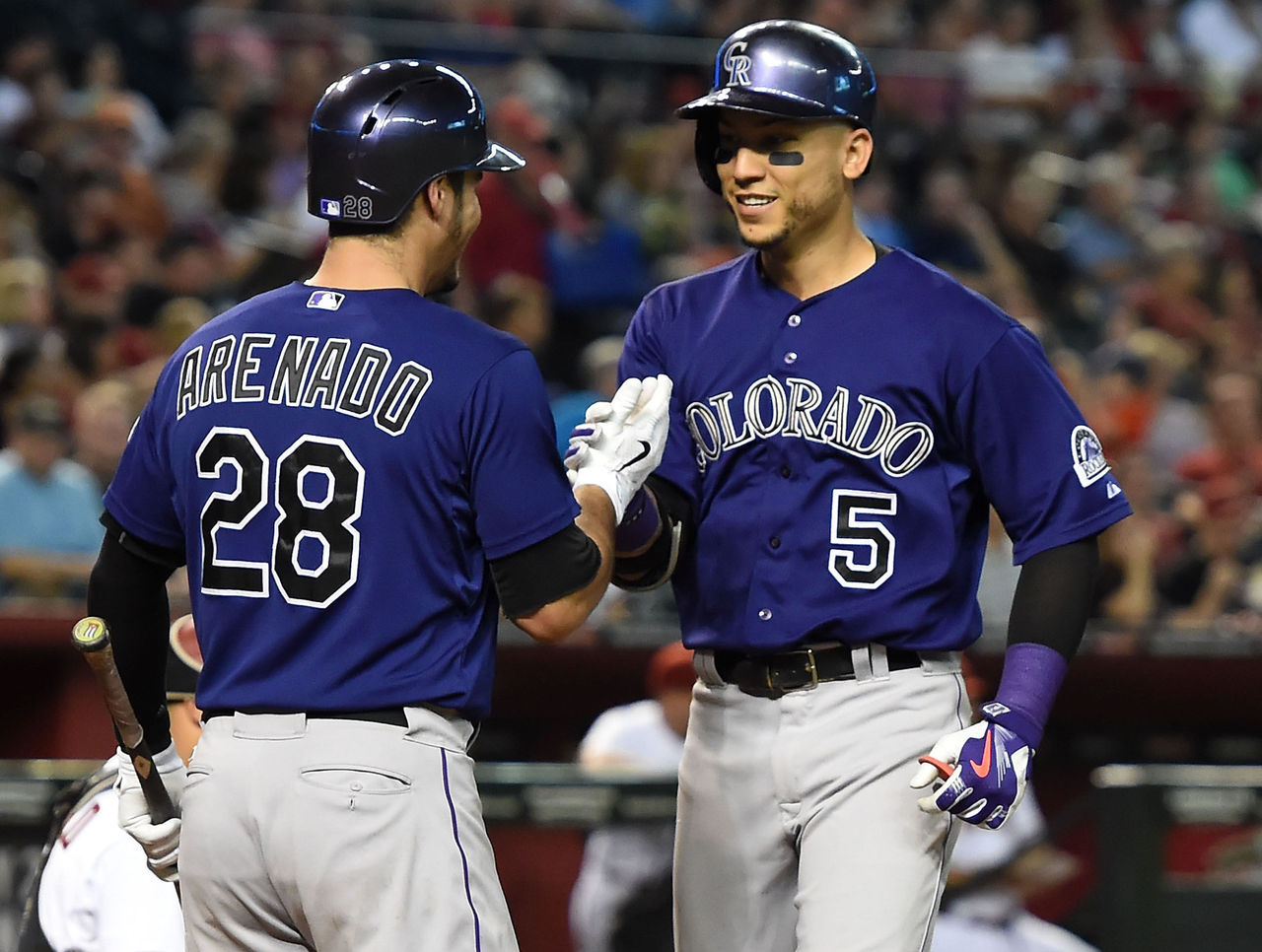Basic MLB DFS Strategy: The "Stacking" Philosophy
Welcome to Stacking 101.
This post will address one of the most widely-used - and contentious - roster construction methods in all of daily fantasy baseball. The “stacking” philosophy is the ultimate boom-or-bust tactic, one which rewards players who bank on blowouts - and punishes everyone else.
So how does stacking work? It’s simple: Build a roster of multiple players from the same batting lineup, and you gain the ability to score several times on one play.
The stacking method is a critical component of most GPP lineups. The tactic is less useful in cash games, since there’s plenty of risk attached to tying the majority of your roster dollars to one team’s performance on any given night.

Most GPP players settle on one of two types of stacking:
Mini-stack: The mini-stack consists of three or four players from one team. This allows the player to combine mini-stacks to lessen the reliance on one team, as well as pluck the very best stacking options from two teams. If a player were to stack in a cash game, this would be the preferred method; even if only one of the two stacks hit, the player will be in good shape.
Full stack: This consists of five players from one team, and is a popular play in large GPP tournaments. Players who use the full stack are banking on a minimum double-digit run total from the team in question; players generally prefer the top five hitters in the order, but will occasionally skip one in favor of using the No. 6, 7, 8 or 9 hitter.
Figuring out which teams to stack is one of the most difficult endeavors a tournament player will face on a daily basis. Here are some tips to get you started:

Target bad pitchers: The relative effectiveness of a batting lineup varies considerably from game to game - so rather than try and guess which teams are primed for a breakout, take a look at the other dugout. Poor pitchers are the perfect kindling for an offensive inferno, so look to target hurlers who have struggled, or who simply aren’t very good.
Consider park factors. Players are far more likely to build a successful team from players at Coors Field or the Rogers Centre than at Safeco Field or Petco Park. Stadium configuration and geography do play a role in offense, so consider stacking teams that play in favorable parks. You’ll have to deal with larger ownership numbers, however, so bear that in mind.
Consult the betting totals. The expected run total is more of a betting tool, but serves a vital purpose in DFS, as well. The higher the total, the more offense those teams are expected to produce. Again, savvy DFS players will be studying the same information and building their rosters based on it, so be aware that you’ll be dealing with high ownership totals.
Check the weather - specifically the wind. The wind factor is a minor one, but could allow you to set up an impressive stacking option more cheaply than others. Chicago’s Wrigley Field, for example, often sees inflated run totals due to strong winds blowing out toward the outfield wall. If you’re looking for a slight edge, this might be the place to do it.
Consider a contrarian approach. There’s far less certainty with this tactic, but opting for a contrarian lineup can yield sensational results. Look into lineups you suspect will see low ownership for whatever reason, and take a chance on rostering their best hitters; even if you combine a mini-stack with a stronger mini-stack, you could find yourself in great shape.
Even after you decide on your full stacks or mini-stacks, you’ll have some work to do. Here’s how to balance the rest of your lineup:

- Be sure to leave enough money for competent pitching. No amount of stack success will matter if your pitching doesn’t convert, so be mindful of how much money you have left over - and tweak your stack(s) to make more room if you must.
- Choose your complementary players wisely. Most daily fantasy sites limit how many players you can roster from one team; favoring supporting hitters who bat high in the lineup and have good pitching matchups should yield positive results.
- Watch out for any inclement weather - and make roster adjustments accordingly. There are few things more devastating in daily fantasy baseball than building the perfect full stack, only to see all five of your players shut out due to a postponement.
- Check for any last-minute lineup changes, which can have a major impact on your roster. On the plus side, if any of your stack options are scratched, you can sub in the replacement, who will almost always be cheaper than the original starter.